Acura RDX undergoes smooth refinement
By John Gilbert
When Honda decided to grace its upscale Acura line with a compact crossover SUV for the 2007 model year, it rolled out the RDX, which was an impressive sports-car-like performer amid a sea of more mundane competitors. That sea has experienced a remarkable rising tide during the past five years, so it’s time for a new RDX that is both an impressive performer and a bit of a contradiction on wheels.
The new design is considerably smoother, playing off the just-introduced Honda CR-V with a distinctly upgraded spin to set it apart from its mainstream sibling. It discards the high-performance turbocharged 4-cylinder engine for the smooth and powerful 3.5-liter V6 that powers the Acura TSX sedan and the Honda Accord and Odyssey van. Handling and connectivity features are among focus points of the new RDX, which has lost the harshness of the first generation’s ride without sacrificing the firm cornering feel.
The new RDX will have base prices of $34,320 for front-wheel-drive models, and $35,720 for a new and more-sophisticated all-wheel-drive system. Built at the East Liberty, Ohio, plant, the RDX will compete with the BMW X3, Audi Q5, Mercedes GLK 350, and Infiniti EX35, according to Acura, but the proliferation of compact crossovers might also throw the Volvo XC-60, Range Rover Evoque, Volkswagen Tiguan, Chevrolet Equinox, GMC Terrain, Ford Edge, Toyota RAV4, Nissan Murano, Hyundai Santa Fe, Kia Sorento, Mazda CX-7 — and its new replacement, the CX-5 — into the fray.
Curiously, while such major players as BMW, Mercedes, Mazda, and Hyundai are proving that switching from six cylinders to four can reduce fuel consumption, and gaining sufficient power from applications of turbocharging in some instances, Acura, which was among the first to try that concept with the first RDX, now is going the other direction — from four to six cylinders — in search for the same improvement in fuel economy.
Jeff Conrad, the Acura vice president, explained that projecting “Generation Y” buying habits have changed from what Honda’s market research had previously projected. “Gen Y is the first generation to earn less money than their parents,” Conrad said. “Luxury vehicles involve emotion, because you’re buying a vehicle not because you have to, but because you want to — and you can.
“But value is now a top priority, and buyers are less interested in horsepower and size, which will cause a fundamental change in the luxury car market. Acura has unique core values, focusing on the driver more than just the machine, on connective technology, and on sustainability. We will remake our whole line with those priorities.” Read more
Ford relaunches Taurus, refines Flex
By John Gilbert
The completely redone Ford Fusion won’t reach showrooms until late summer, but its flashy restyling has been the talk of the auto show circuit. In fact, it may be the reason Ford created an all-new Taurus ahead of its time.
The 2013 Taurus is a car for all reasons for those who need, or want, a large car. And it also is a car for all seasons with available all-wheel-drive, for those living in the snow-belt, or, a the introduction session proved, for those living in non-snow regions that occasionally might get blindsided by a blizzard.
When the midsize Fusion was shown at the Detroit Auto Show, one cynic suggested that if the rear seat-room was adequate, there would be no need to continue building the larger Taurus. The new Fusion’s rave reviews made the new-for-2010, and still new-looking, Taurus seem outdated before its time.
The considerable expense of rebuilding a next-generation car is what causes automakers to build a model to last five or more years, perhaps with only a mid-term cosmetic refreshing, but Ford went against conventional planning. As Ford’s flagship, the Taurus meets the demands for a large sedan to take on the armada of General Motors large cars, as well as Chrysler, European, and now Asian big cars. So even though the current Taurus was only going into its third model year, Ford introduced another entirely new Taurus as a 2013 model. It was a brilliant move.
The new Taurus smoothes out a few of the contours that looked so fresh just two years ago, and the car takes on a lower and sleeker look with a cousin-like resemblance to the upcoming Fusion. Taurus adopts a Fusion-shaped grille, which apparently will establish it as a new corporate signature. The top-of-the-line Taurus again will be the SHO model, which is loaded with performance features and begins at a lofty $39,200. The one we drove was loaded up to an even loftier $44,485 with voice-activated navigation and 20-inch painted aluminum wheels.
A subtle benefit of short-shifting the renewal is that the current Taurus, which is a very good and handsome sedan, so the renovation didn’t require tossing out everything and starting with a clean sheet. In the Taurus’s case, Ford designers and engineers could work with an already-impressive vehicle, and small alterations or tweaks were aimed at smoothing out features, polishing the interior, and making the Taurus go, handle and ride better and more quietly. The finished product improves the appearance, and is filled with upgrades inside and out.
That wasn’t Ford’s only recent maneuver; the company is revising the look of the stylishly square Flex as well. Ford introduced both the Taurus and Flex for 2013 to the automotive media in Portland, Oregon, in mid-March. That plan made sense at planning time, because back at Ford’s home, Detroit, and throughout the rest of the Upper Midwest, early March is normally still in the grip of winter, while Portland promises moderate temperatures despite a little rain.
Ah, but 2012 began with the Upper Midwest’s “non-winter,” and while Minnesota, for example, was recording a couple of weeks of record lamb-like warm temperatures — 60s and 70s even — Portland’s weather was remarkably the opposite and lionish. We drove from downtown Portland in a steady, day-long rainstorm and headed toward the Pacific Coast. Driving up some suburban foothills, we found that the steady rain turned to snow, hanging heavily in white majesty from the fir trees as we went to higher elevation.
It was perfect timing, because both the new Taurus and Flex make all-wheel drive available. The Tauruses we test-drove were, in fact, the hot-performing SHO models. Newer Ford folks say “Show,” in referring to the SHO, while more veteran observers recall the original came out in 1989 and the name was the initials for “Super High Output,” for the gem of a V6 engine that was built specifically for the car by Yamaha. Later, Yamaha built Ford a V8 for the car.
The new SHO also has a V6, but no longer a V8. Ford’s latest technology has been to mount turbochargers on its 3.5 V6 and create more power and performance than a larger V8, while also improving fuel economy. The Taurus will have three engines available, starting with a 2.0-liter 4-cylinder EcoBoost, then the normally-aspirated 3.5 V6, and topped by the EcoBoost 3.5 V6. The power range shows the 2.0 EcoBoost is turbocharged up to 240 horsepower and 270 foot-pounds of torque, while still boasting an EPA estimate of 31 highway miles per gallon. The normal 3.5 V6 has 288 horsepower and 254 foot-pounds of torque, and a range of 19 mpg city and 29 highway.
If you select the SHO, you get the EcoBoost, which has two turbochargers and direct injection, and the power takes a quantum leap to 365 horsepower and 350 foot-pounds of torque, with fuel economy estimates of 17 city, 25 highway. Not sensational fuel economy, but very good consider that the SHO has a lot of power for a V8, and startling potency for a V6. Read more
Skyactiv engulfs new Mazda CX-5
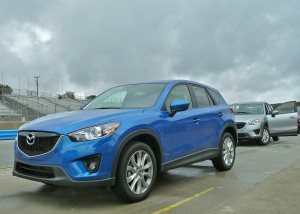
CX-5 styling strategy was done to encase Mazda's Skyactiv engine, drivetrain, aero and design technology.
By John Gilbert
Mazda has established a reputation for building vehicles that range from unusual to mainstream, with all of them sharing a heritage of being enjoyable to drive. With its new CX-5, Mazda may have outdone even its own standards — and the analogy of hitting a home run is noteworthy when nearly all competitors are settling for doubles and triples.
The CX-5 meets the demands of consumers in a struggling economy, who are seeking the seemingly impossible combination of efficient size, cutting-edge technology, safety, fun to drive performance and handling agility, high fuel-economy potential, and high-quality features, while still being available at a reasonable price. After a brief preliminary drive at its introduction, the CX-5 gave no hint of a weakness in any of those categories, all for a price structure starting at $21,000.
Skyactiv was impressive when first unveiled in the Mazda3 in October, although we were told at the time it had to be limited in its totally holistic application, because the full “spaghetti pile” of exhaust manifolds would not fit in the engine bay, and must wait for the next generation Mazda3. It was still an impressive jump, but now we learn the true difference. The CX-5 is the first of what Mazda calls its sixth generation of design concepts, and it was designed to be all-around Skyactiv to house the engine and transmission. The huge manifold fits under the hood, and it gains enough added torque to — suprisingly — outperform the smaller and lighter Mazda3.
Mazda introduced the CX-5 to the auto media at Monterey, Calif., so that we could drive it on Mazda Raceway at Laguna Seca. Driving an SUV, even a compact crossover SUV, on a famous road-racing circuit is a bold venture, but even in a steady rainstorm, the results were impressive. We were advised to stay off the fastest racing line, because the rain would make it slick, but after driving both the front-wheel and all-wheel-drive models for several turns, I felt confident enough to first go through the fast line at every turn, and then go hard through them all. The CX-5 never varied, never leaned, and never threatened to break traction.
It was so good that I asked a top Mazda performance engineer about the difference in lap time between the admittedly quick Mazda3 Skyactiv and the new CX-5 around the twisting Laguna track. He said the difference was 3 seconds — in favor of the CX-5! In road-racing, lap times are differentiated by tenths, and even hundredths, so a difference of 3 seconds a lap might cause the runner-up to withdraw.
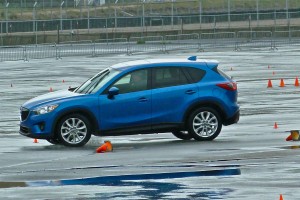
When pushed around a race track, or splashing around an autocross in the rain, the CX-5 was stable and firm.
We later pushed the CX-5s around a well-designed autocross course set up in the puddles of the paddock parking lot. Again, starting cautiously you realized you could take every turn faster, and confidence built quickly.
And this from a CX-5 that has highway fuel economy numbers ranging from 31-35 miles per gallon, depending on the model. My driving partner and I recorded a computerized 31.5 mpg on a stretch where my driving intentions were to evaluate the suspension and agility on the rolling hills and curving roadways inland from Monterey.
The shift from large SUVs to smaller and more fuel-efficient crossovers means manufacturers from all around the world are scurrying to improve their smallest SUVs to grab a slice of the expanding pie. A lot of outstanding vehicles crowd the compact crossover segment, but the common theme is compromise. In seeking more power, sportier handling, more comfortable suspension, interior amenities, safety, and improved real-world fuel-efficiency, providing “most of the above” is commendable. The Mazda CX-5 boasts “all of the above.”
The secret is not the CX-5’s design, or interior, or fun-to-drive suspension — although all of those elements are there — but the all-encompassing assets of Mazda’s new Skyactiv concept with its very impressive Skyactiv engine and purpose-built transmission. Read more
Fiat Abarth: ‘right amount of wrong’
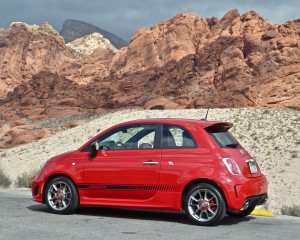
Stretched longer and housing power, suspension, interior and exterior upgrades, the Fiat Abarth costs $22,000.
By John Gilbert
Advertising can be coersive, exaggerated, informative, and meaningful, sometimes just annoying, other times fun. Then there are those special cases, where an ad can be so memorable it could only be improved if you could bring it to real life.
Fiat has pulled off one of those special ads, and it started with the Super Bowl and carried through to the introduction of the 2013 Fiat Abarth at the car’s introduction, in Las Vegas in early March. Fiat started to bring its subcompact 500 into the U.S. a year ago, and Jennifer Lopez did a series of memorable commercials driving the 500, but the little car drew some, but not a lot, of interest. Then came the Super Bowl.
The Fiat Abarth is a specially modified and turbocharged version of the new little subcompact 500 coupe, adding a new dimension to the 500 for Fiat, Italy’s expansive and technically savvy company, which now owns Chrysler Group. “The 500 is a fun, unique, agile, and cute car,” said Tim Kuniskis, the head of Fiat North America. “The Abarth is a 500 with just the right amount of wrong…It’s flirting with irrational, for $22,000.”
It’s not at all irrational if you thought the Fiat 500 needed a little extra dose of punch, because the Abarth has enough punch to satisfy discriminating performance-oriented drivers, whether on their daily commute, roaming on your favorite twisty roads, or taking advantage of a track-day at a local road-racing circuit. The question was, how to translate the special qualities of the Fiat Abarth, combining its practical side with its exotic Italian passionate heartbeat.
That made the Super Bowl the perfect launching pad for the Fiat Abarth, and it was a provocative ad that has continued, after turning out better than anyone could have imagined. The car comes in different colors, but because of the ad, you’ll have reason to picture it mainly in black.
As always, the Super Bowl was loaded with clever commercials, and sometimes they’re better than the actual football game. If you were normal — or at least a normal, red-blooded male — you undoubtedly remember the commercial where a normal-looking fellow is walking down a busy sidewalk, New York we’d guess, carrying a cappucino, or latte, or mocha, or some such designer coffee he has just purchased. Suddenly he stops in his tracks and stares, because ahead of him, bending over to adjust her high heels, is a stunningly beautiful, dark-haired woman in a provocatively flowing black dress with red trim. She glances back and catches him staring at her, and he freezes. She straightens up and confronts him, slaps him across the face, grabs him by the necktie and pulls him close to her. She reaches into his mocha-latte-cappucino thing and scoops out a fingerful of whipped cream. She puts it into her mouth, but a small bit of it falls, strategically plopping right where her discreetly plunging neckline is most discreet.
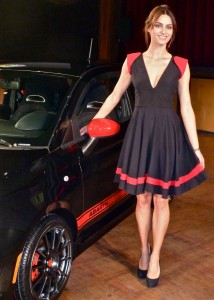
Catrinel Manghia repeated her prize-winning performance on Fiat Abarth TV ads at the Las Vegas media introduction. The car looked good, too.
The totally smitten guy is somewhere between shock and ecstacy, as he leans forward, slowly, eyes closed. We think he might attempt to lick up the fallen whipped cream, but as he leans forward, he opens his eyes to find that the most beautiful woman in the world has vanished. In place of his passionate objective is a new passionate objective — a Fiat Abarth, parked at the curb and wearing color-coordinated black paint with red accents.
When the seductive commercial first ran during the Super Bowl, Fiat’s website went instantly crazy. According to Edmunds.com, a widely accepted automotive news website, the Fiat showed an immediate increase of 3,354 percent in inquiries immediately after the Super Bowl ad aired — the largest increase of any of the many cars advertised during the game. Virtually all the hits were for the Fiat Abarth.
Since the Super Bowl, Fiat’s website has registered 8 million hits for the Abarth on Youtube, said Kuniskis, speaking at the news media introduction for the Fiat Abarth, in Las Vegas in early March. There have been more online requests for the Fiat Abarth since the Super Bowl than there had been, total, for the 500 itself in a full year. Read more
Toyota deserves an ‘A’ for new Prius c
By John Gilbert
For a couple of decades now, the entire Toyota auto empire has been identified by the Camry. But maybe it’s time to realize that the Prius might be taking over as Toyota’s new signature vehicle.
Actually, it’s not just the Prius anymore. It’s the whole Prius family, which has a new baby — the Prius c. The “c” is lower-case, incidentally, and allegedly stands for “city,” and it is projected to become the top-selling model in the Prius group, because it’s smaller, lighter, less expensive, and gets the best mileage of any Prius.
Those last two items are what Toyota figures will drop the company’s aging demographic and become the hybrid for the younger masses, because you can get into one and be environmentally sound for $20,000.
Toyota tends to go beyond single models, going instead for clusters of cars, such as Lexus, or Scion. The same has happened to the Prius, which started out over a decade ago as a single vehicle, and became the hybrid compact that outsells all other electric and/or hybrid vehicles combined. Only Honda, with its Civic Hybrid, has built a strong competitor in sales of a high-mileage, good-looking compact with a small gas engine complemented by a battery pack’s electric motor. With its gas engine hooked up to recharge the electric motor’s power, fuel economy numbers have commonly reached 40 miles per gallon and beyond.
The Prius came out in 2000 as a 2001 model, and the second generation moved the car from being an ugly duckling to a stylishly popular version with a contemporary angular look. The third generation refined the operation and carries on the look that carries on today. Toyota has sold 2.5 million Priuses globally, and 1.1 million of those have been in the U.S. That puts Prius at about a 4-1 advantage over Honda’s hybrids, 5-1 over Ford’s, and 10-1 over any hybrid sales generated by General Motors. Worries about the lifespan of the Toyota Hybrid Synergy Drive system have been nullified by the fact that 96 percent of all Priuses sold are still in operation.
Last year, Toyota expanded the Prius line by adding the Prius V, which is an elongated, wagon-style hatch companion to the standard Prius, which is now called the Hatchback. The Prius V adds 58 percent more cargo room, and Toyota sold 8,399 of them in their first 10 weeks on the market.
Obviously anticipating the arrival of the Chevrolet Volt and Nissan Leaf electric plug-in cars as competition, Toyota also added a plug-in version of the standard Prius Hatchback, which can be driven like a normal Prius, adding the advantage of plugging it in overnight. When fully charged, you can drive 15 miles at speeds up to 62 mph, and it will register 95 miles per gallon, or 50 in combined driving with both the plug-in charge and normal hybrid operation.
The Volt, incidentally, will run on electric only for about 35 miles, then its gas engine takes over, so if you live 10 miles from work you can get there and back day after day without ever needing to buy any more gasoline. However, the gas engine will not charge the battery pack, so it must be charged by overnight plug-in. The greater negative, along with a potential spike in your electric bill, is that the Prius price is in the $40,000 range, or about twice the price of a Prius c. Word came about the first of March that Chevrolet is halting production of the Volt for a few weeks because of more supply than demand.
There are four levels of Prius c vehicles, beginning with a base car at $18,950, a second level with more features at $19,900, then a step up to $21,635, and a fully loaded model at $23,230.
One of the key elements of the c is that it comes equipped with some impressive features. Traction control, stability control, brake assist, electronic brake force distribution, and a hill-start assist control to prevent rolling backwards, are among the features available. The modern trend is that if we’re moving toward smaller and more fuel-efficient cars, that doesn’t mean we want primitive and starkly basic cars. Read more


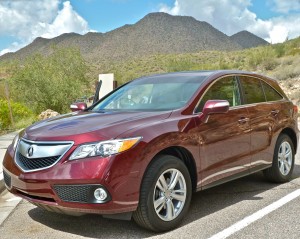
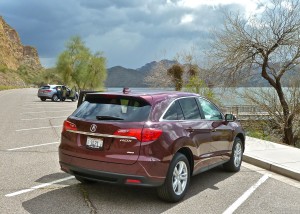
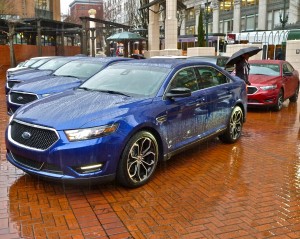

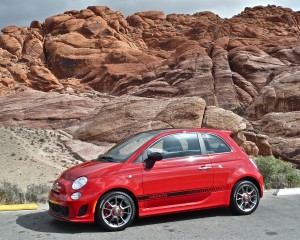
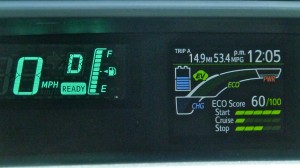
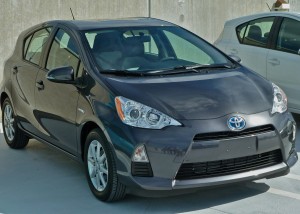
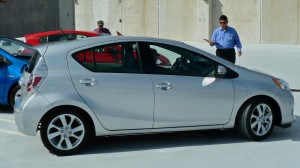
 John Gilbert is a lifetime Minnesotan and career journalist, specializing in cars and sports during and since spending 30 years at the Minneapolis Tribune, now the Star Tribune. More recently, he has continued translating the high-tech world of autos and sharing his passionate insights as a freelance writer/photographer/broadcaster. A member of the prestigious North American Car and Truck of the Year jury since 1993. John can be heard Monday-Friday from 9-11am on 610 KDAL(www.kdal610.com) on the "John Gilbert Show," and writes a column in the Duluth Reader.
John Gilbert is a lifetime Minnesotan and career journalist, specializing in cars and sports during and since spending 30 years at the Minneapolis Tribune, now the Star Tribune. More recently, he has continued translating the high-tech world of autos and sharing his passionate insights as a freelance writer/photographer/broadcaster. A member of the prestigious North American Car and Truck of the Year jury since 1993. John can be heard Monday-Friday from 9-11am on 610 KDAL(www.kdal610.com) on the "John Gilbert Show," and writes a column in the Duluth Reader.